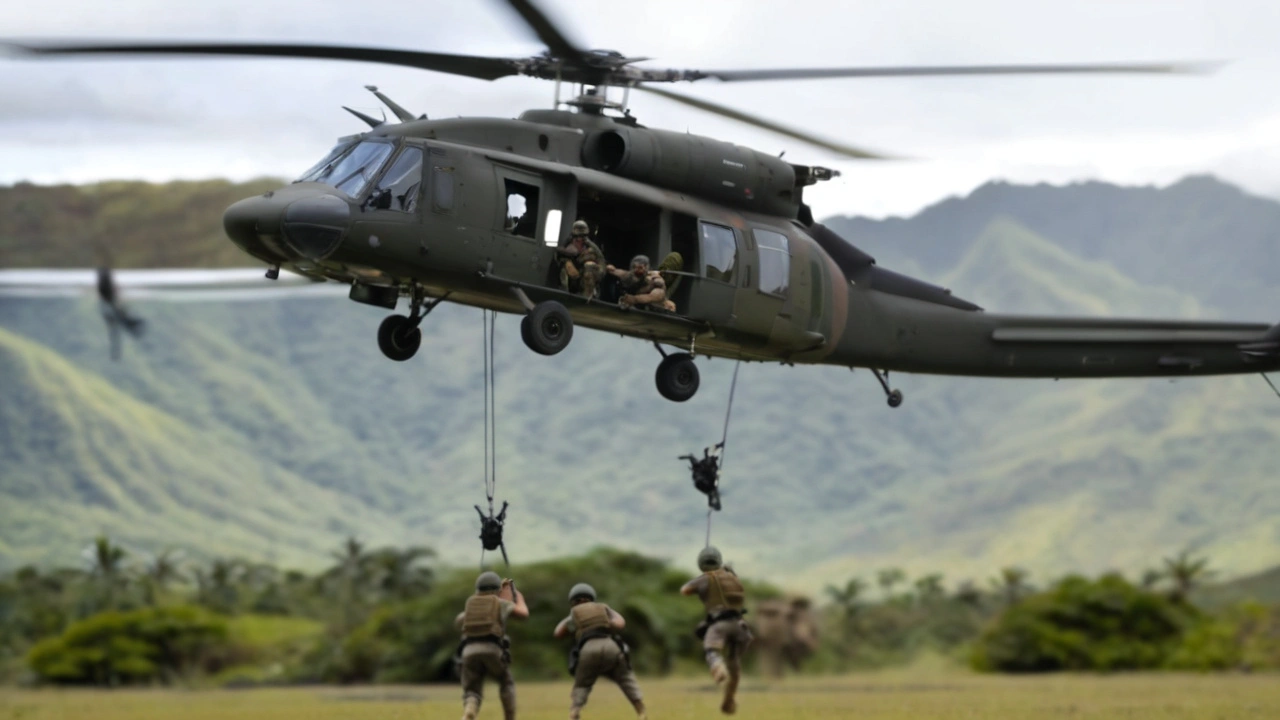Challenges and Delays in Palau
The construction of a sophisticated long-range radar system on the Pacific island of Palau, envisioned to elevate surveillance capabilities for the United States and its allies, has been halted. Initially touted as a key tactical asset, the Tactical Multi-mission Over the Horizon Radar (TACMOR) system was expected to bolster U.S. oversight well beyond 2026. The system, which consists of a transmitter on Babeldaob Island and a receiver on Angaur Island, is now experiencing significant delays. These setbacks arise from a blend of construction issues and a comprehensive funding review currently underway, throwing a wrench into the works of an otherwise ambitious defense initiative.
Strategic Importance of the 2nd Island Chain
The radar system holds particular significance given its expected role within the 2nd island chain, a strategically vital zone in the Asia-Pacific region. The location forms a defensive perimeter, pivotal to the U.S. military's broader regional strategy against potential threats. By extending radar surveillance capabilities deep into the Pacific, the TACMOR system aims to offer an expansive watch over movements within this complex maritime environment. As military tensions simmer, especially with rising powers asserting their influence, the radar system's timely deployment was viewed as imperative. Therefore, these delays come with high stakes, both operationally and strategically.
History and Initial Goals
Originally pitched in 2017, the TACMOR system was heralded as a game-changer for monitoring aerial and maritime traffic over a wide geographic expanse. The system's design integrates advanced radar technology intended to identify and track objects over the horizon and beyond the line of sight. This is particularly useful in areas where conventional radar systems are inadequate due to range limitations. Given Palau's strategic location, the radar system was seen as a linchpin in the regional security architecture, enabling faster response times and improved situational awareness for U.S. forces and their allies.
The Role of Palau
Palau, an island country surrounded by the majestic waters of the Pacific, has long been a stalwart ally of the United States. The hosting of such an advanced radar system on its territory underscores the deep-seated defense collaborations between the two nations. The transmitter on Babeldaob Island and the receiver on Angaur Island were purposefully chosen to maximize the system's surveillance coverage. Palau's geographical position places it at an ideal junction for monitoring the vast Pacific, ensuring that the radar system's capabilities are fully leveraged. However, the current delay serves as a reminder of the complexities involved in orchestrating such high-stakes military infrastructure projects.
Construction Hiccups and Funding Reviews
The radar system's development has been beset by unforeseen construction challenges. Ensuring that the infrastructure can withstand the island's unique environmental conditions has proven difficult. The tropical setting of Palau, characterized by high humidity, frequent rains, and the occasional typhoon, mandates meticulous planning and robust construction standards. Moreover, the exigencies of adhering to local regulations and ensuring minimal ecological disruption have added layers of complexity to the project. Concurrently, a detailed funding review is underway, aimed at scrutinizing the costs and ensuring optimal allocation of resources. This bureaucratic process, while essential for fiscal accountability, has inadvertently compounded the delays affecting the system's completion timeline.
Implications for U.S. Military Strategy
The U.S. Air Force has formally acknowledged the delay, acknowledging its significant implications. The current pause reverberates within the broader spectrum of U.S. military strategy in the Asia-Pacific. The 2nd island chain, encompassing key positions like Palau, plays a critical role in U.S. efforts to maintain a deterrence posture amid evolving regional dynamics. With the radar system's deployment deferred, the U.S. faces challenges in effectively executing its strategic objectives. This may also embolden rival states, given the temporary lapse in surveillance capabilities initially planned to be provided by the TACMOR system. For the U.S., a swift resolution to these delays is paramount.
Looking Ahead
While the delays are concerning, they also present an opportunity for the U.S. military to reassess and refine its larger strategic framework. This period can be used to address the underlying construction challenges comprehensively, ensuring that the final deployment is both robust and reliable. Engaging with Palau's local experts and stakeholders can also facilitate smoother progress moving forward. As geopolitical tensions persist, the successful deployment of the TACMOR system will significantly enhance the surveillance network in the region, thereby fortifying U.S. military preeminence. Stakeholders remain hopeful that with concerted efforts, the project will soon be back on track, serving its critical role in ensuring regional stability and security.

Write a comment